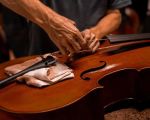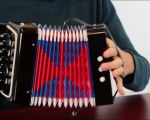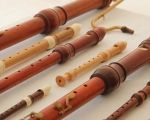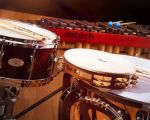- 1-materials-needed-to-make-a-straw-musical-instrument
- 2-step-by-step-instructions-for-making-a-straw-instrument
- 3-how-the-straw-instrument-produces-sound-and-science-behind-it
- 4-creative-variations-and-ideas-for-straw-musical-instruments
- 5-real-life-experience-and-benefits-of-making-straw-instruments
1. Materials Needed to Make a Straw Musical Instrument
Making a musical instrument out of a straw is a simple and fun craft project that requires minimal materials. Most importantly, you need:
- A plastic or paper drinking straw (preferably a standard size)
- Scissors to cut the straw
- A ruler or measuring tape for accuracy
- Optional: tape or a small piece of rubber band to secure parts
These materials are easy to find around the house, making this an accessible project for children and adults alike.
1.1 Choosing the Right Straw
The type and length of the straw affect the pitch and tone of the instrument. A longer straw generally produces a lower pitch, while a shorter one creates higher sounds. Sturdier straws tend to give clearer tones and last longer during play.
2. Step-by-Step Instructions for Making a Straw Instrument
Here’s a straightforward method on how to make a musical instrument out of a straw that works like a simple reed instrument:
2.1 Cut the Straw
Begin by cutting one end of the straw diagonally to create a sharp edge. This cut acts as the reed and is crucial for producing sound.
2.2 Flatten the Cut End
Next, gently flatten the straw’s cut end between your fingers or with a small flat surface to make it thin and flexible, allowing it to vibrate.
2.3 Blow Into the Straw
Place the flattened end gently between your lips and blow air through it. Adjust your blowing pressure and lip positioning until you hear a clear buzzing or humming sound.
2.4 Experiment with Lengths
Try trimming the straw shorter in small increments and notice how the pitch changes. This experimentation lets you discover different notes and tones.
3. How the Straw Instrument Produces Sound and Science Behind It
The sound generated by this simple straw instrument comes from the vibration of the flattened edge, which acts like a reed in traditional woodwind instruments.
When you blow air through the flattened straw tip, the air causes the thin reed to vibrate rapidly, creating sound waves inside the straw’s tube. The length of the straw determines the pitch because it affects the air column’s size inside the straw—shorter tubes produce higher notes, and longer tubes produce lower notes.
This DIY approach offers a practical introduction to the physics of sound and acoustics.
4. Creative Variations and Ideas for Straw Musical Instruments
Once you master the basic straw instrument, there are fun ways to get creative and enhance your music-making:
4.1 Multiple Straw Panpipes
Cut several straws into varying lengths and tape them side-by-side to create a simple panpipe. Blowing across each straw produces different notes, allowing you to play melodies.
4.2 Straw Kazoo
Add a piece of wax paper or plastic wrap stretched over one end of a short straw to mimic a kazoo’s buzzing sound. Vibrate your vocal cords while blowing through it for a fun effect.
4.3 Combining with Other Household Items
Incorporate straws with paper tubes, rubber bands, or cardboard to build more complex instruments. For example, attaching straws to a small box can make a straw xylophone or wind instrument hybrid.
5. Real-Life Experience and Benefits of Making Straw Instruments
A teacher named Sarah shared how she used this straw instrument project in her elementary music class. Students were fascinated by how something so simple could make real music. The activity helped them understand sound production while encouraging creativity and teamwork as they experimented with different designs.
Making musical instruments out of everyday items like straws not only sparks curiosity about music but also develops fine motor skills and introduces basic scientific concepts. It’s a perfect blend of learning and play.
For those eager to explore further musical creations, Beat Trigger offers a curated selection of DIY music kits and tools that complement these homemade instruments, making the journey from beginner to budding musician smooth and inspiring.








